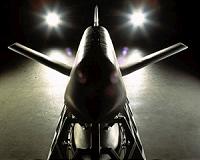| . |  |
. |
Tehran (UPI) Nov 19, 2010 The missile contest between Iran and Israel moved up a notch this week. Iran claimed Thursday that it had successfully tested an indigenous air-defense missile that it boasted was as good as the powerful S-300 system that Russia refuses to deliver. In Israel, military officials pledged that a controversial multi-layered missile defense shield, produced by Israel Aerospace Industries and Rafael Advanced Defense Systems, would be in place and operational by 2015. They said this would include "kamikaze satellites" able to blow up ballistic missiles in space. The shield is intended to protect the Jewish state from Iran's Shehab-3b ballistic missile and the more advanced Sejjil-2, which is being developed, as well as shorter-range missiles and rockets unleashed by Hezbollah in Lebanon and Palestinian militants in the Hamas-controlled Gaza Strip. The announcement of Iran's reported tests of its new air-defense system, identified as the Mersad -- "Ambush" in Farsi -- came as the Revolutionary Guards conducted what Tehran called the Islamic Republic's biggest air-defense exercises. The five-day exercise that began Tuesday was intended to test the country's air-defense capabilities, long one of its primary military weaknesses, against possible missile and airstrikes by the United States or Israel. Amid Israeli pressure on the United States to plan attacks on Iran in a bid to force it abandon its alleged quest for nuclear weapons, Gen. Hamid Arjangi, the exercise spokesman, was quoted as saying Wednesday that Iranian air force jets had intercepted six foreign surveillance aircraft seeking to monitor the drill. On Thursday, Arjangi said the Mersad, first unveiled in April, was capable of downing targets at low to medium altitudes and was being mass-produced. It isn't clear whether the Mersad is a functioning system. Tehran frequently inflates the capabilities of its indigenous weapons system. Officials said when the Mersad was unveiled that it was modeled on the U.S. MIM-23 Hawk surface-to-air missiles built by the Raytheon Corp., and supplied to Iran during the reign of Shah Mohammad Reza Pahlavi in the 1970s. The Hawk, which the Iranians copied and call the Shahin, is the predecessor of Raytheon's MIM-104 Patriot. The Hawk has a range of 15 miles and packs a 119-pound warhead, so if Arjangi's claims are correct the Iranians have been able to extend its capabilities to cover medium-altitude targets. But Iran's state television reported Thursday that the Mersad "is an upgraded version of the Russian anti-aircraft S-200 missile system and has the same capability as that of the Russian S-300 system." The S-300 can engage 100 targets simultaneously, shoot down aircraft and missiles at up to 90 miles away at altitudes of up to 90,000 feet. That's vastly more powerful than the Hawk and it's questionable whether the Iranians have mastered air-defense technology to that degree. One reason Tehran might be inclined to exaggerate is that it's seeking to counteract the political impact of Moscow's refusal to deliver five S-300PMU-1 batteries Iran ordered in an $800 million contract Dec. 25, 2007. Russia claimed in June that U.N. economic sanctions imposed on Iran over its nuclear program precluded it supplying the weapons. But it had already delayed delivery for several months before that because of U.S. pressure. The S-300 is built by NPO Almaz, part of Russia's Almaz-Antey Air Defense Concern. Iran wants the long-range, high-altitude system, one of the world's most potent air-defense systems, to protect its nuclear installations. The system would provide a formidable boost for Iran's current, largely short-range, air defenses. These include Tor-M1 systems, NATO codename SA-15 Gauntlet, built by Almaz Antey and acquired from Russia in 2008. Israel's target date for completing its air-defense shield corresponds to its assessment of when Iran could acquire nuclear arms. "Within the coming five years we will see this doctrine implemented," Col. Zvika Haimovitch of the Israeli Air Defense Corps told a government-sponsored aerospace conference in Jerusalem Monday. The most powerful component in the system will be the high-altitude, long-range Arrow III anti-ballistic missile built by IAI and Boeing, largely with U.S. funding. IAI project director Yoav Turgeman said Arrow would be able to launch booster-rigged satellites beyond Earth's atmosphere to collide with hostile missiles. "We're talking about hermetic protection," he said.
Share This Article With Planet Earth
Related Links Learn about missile defense at SpaceWar.com All about missiles at SpaceWar.com
 JASSM-ER Test Flights Highlight Outstanding Development Effort
JASSM-ER Test Flights Highlight Outstanding Development EffortOrlando FL (SPX) Nov 19, 2010 Lockheed Martin's Joint Air-to-Surface Standoff Missile - Extended Range (JASSM-ER) recently flew two successful test flights at White Sands Missile Range, NM, increasing the program's success rate to 91 percent in 11 flights. The live 2,000-pound class missiles, released from B-1B bombers, effectively navigated to and destroyed their intended targets. The primary flight test objectives we ... read more |
|
| The content herein, unless otherwise known to be public domain, are Copyright 1995-2010 - SpaceDaily. AFP and UPI Wire Stories are copyright Agence France-Presse and United Press International. ESA Portal Reports are copyright European Space Agency. All NASA sourced material is public domain. Additional copyrights may apply in whole or part to other bona fide parties. Advertising does not imply endorsement,agreement or approval of any opinions, statements or information provided by SpaceDaily on any Web page published or hosted by SpaceDaily. Privacy Statement |